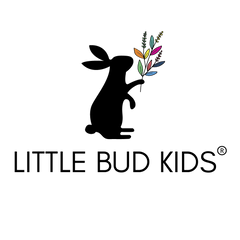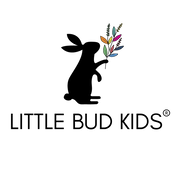The Best Types of Wood for Toys
It is a known fact that not all plastic toys are created equal, but did you know that this also applies to wooden toys?
While wooden toys present numerous advantages over plastic (no plastic toxic chemicals, durable, biodegradable), not all wood is created equal. In this throw-away day and age, with our landfills filling up faster than ever, being an educated consumer can go a long way in saving our environment.
⠀⠀⠀⠀⠀⠀⠀⠀⠀
In this post, I want to highlight the distinction between softwoods vs. hardwoods vs. MDF/plywood/compressed wood in wooden toys. Why? Because choosing the type of wood for a toy could make a difference in whether or not that toy could be passed on to the next kid or not or whether or not we are really touting more chemical-free toys.
FIRST CHOICE: SOLID WOOD, NAMELY, HARDWOODS
⠀⠀⠀⠀⠀⠀⠀⠀⠀
If you're going after a solid wood, go for a hardwood. The best type of wood for toys are hardwoods. These include woods such as:
Beech
Maple
Birch
Oak
Walnut
Poplar
Ash
Rubberwood
Hardwoods last. They are denser, and are less prone to dents, splintering, and hold up well to wear and tear. Its main advantage is its high density = more durable. Toys made out of hardwoods can be handed down for generations if taken care of well.
WHAT ABOUT SOFTWOODS?
On the other side of the solid wood spectrum are softwoods. Softwoods, compared to hardwoods, consist of woods such as pine, cedar, spruce, redwood, or fir. A tell-tale sign of whether a wood is considered a softwood is if it has needle-like leaves. Hardwood trees typically have broad leaves. While softwoods are typically less expensive than hardwoods, they are less durable and are prone to denting, splintering, and water damage. Depending on the type of toy that is produced, softwood toys can become dented during the manufacturing process (especially if the wood has to be rotated and rolled around during production). Ultimately, although softwoods are still eco-friendly and safe for children, they are not as superior as hardwoods when it comes to longevity.
manufacturing process (especially if the wood has to be rotated and rolled around during production). Ultimately, although softwoods are still eco-friendly and safe for children, they are not as superior as hardwoods when it comes to longevity.
WHAT ABOUT MDF/plywood?
MDF/plywood/compressed wood toys can have almost just as much chemicals as plastic toys. Often times MDF wood is touted as being "green" and sold as "wood toys." However, MDF is an engineered wood that consists of wood fibers and wood powder material pressed and bonded together with an adhesive.

This adhesive is known to have formaldehyde, which is a known carcinogen. However, while the process of making MDF is said to have certain levels of toxicity which we don't particularly want, technically the risk of exposure disappears once it is finished and sealed. Now, not all MDF products are made the same. Some MDF woods will adhere to higher standards (lower toxicity levels) than others, but it is really up to the consumer to determine this from product to product.
Ultimately, while MDF is considered "safe" as long as it is finished and sealed, it is a bit concerning that MDF is terrible in its longevity. MDF easily gets swollen from water damage. Toys that cannot handle any type of fluid just don't last long, especially around babies and children. Secondly, the safety of MDF comes into question particularly for babies who tend to mouth toys and anything within reach.
In conclusion, while MDF toys tend to be much cheaper than solid wood toys, the risks involved in it, particularly as they become worn, may not be worth it. Moreover, in an effort to be more eco-friendly, choosing MDF "wooden" toys may be counter-productive as damaged toys will more likely be sent to the landfill instead of the next kid - and all these seem to defeat the purpose of "going eco-friendly".
IN A NUTSHELL
All in all, if you are choosing to buy wooden toys, avoid buying MDF. Look out for hardwoods (trees with broad leaves) over softwoods (trees with needles). They will be more of an investment, but will reward you ten-fold in its beauty, hardiness, and safety. 💸
⠀⠀⠀⠀⠀⠀⠀⠀⠀
For us, we use sustainably-grown European beech wood and re-purposed Thai rubberwood for our reading and math toys. We love their hardiness and that they are either upcycled or harvested from forests that regrow a tree for every tree cut down. Among the other hardwoods, beech and rubberwood have no odor or chemistry that can cause irritation. Beech is the most available and accessible hardwood in the world, and we love that we source from countries that make sure the amount of wood used never exceeds the amount of wood growing to take its place.
But no matter where you buy your toys from, we hope that as you do your shopping you will keep in mind the differences between the types of woods and that this will help you shop wisely with your wallet and for the planet.


What are your thoughts about Balsa wood for children toys?
Leave a comment